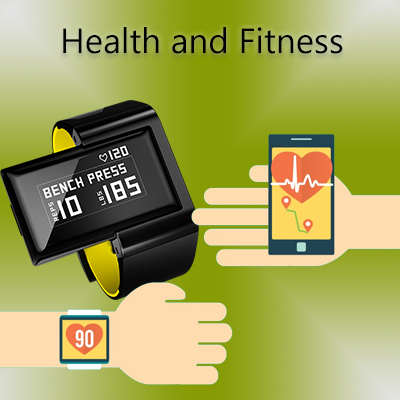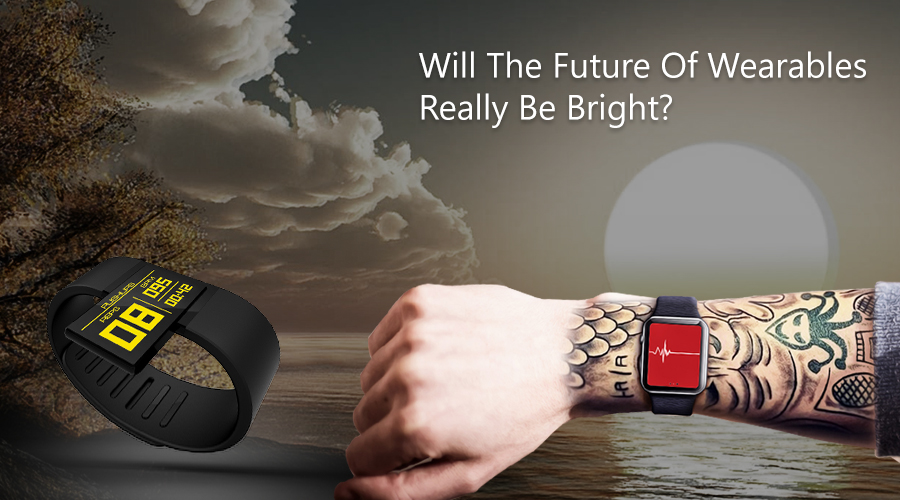The Future of Wearable Technology is Bright!
It is something difficult to tell in one word, better let’s conclude it on its current appliance in different industry sectors, market coverage, and benefits it’s delivering. As you know, Wearables can be in the form of smartwatch, eyeglass, or fitness band, used to track physical activities or monitor health condition. Wearables are being used everywhere – from fitness, retail, healthcare, banking and insurance to travel and manufacturing. This device was first created in 1960s, but its emergence that we have been seeing from early years of the first decade of the 21st of the century.
The worldwide wearable device market was expected to hit USD 6 billion in 2014, and today the expectation is about USD 20.6 billion by 2018, which is at an annual growth rate of 36%. If it is measured in number of units sold, around 19 million units were sold in 2014 and around 485 million will be sold by 2018, according to ABI research. But without an in-depth analysis, it is somewhat difficult to believe the prediction. Better let’s look beyond the predictive report of wearables and analyse its usage and value in industry-wise.
Health and fitness

We can easily say without much evidence health and fitness is the most benefited sector of Wearables, where wearable and its applications are already into mainstream. According to a research, wearable sport and fitness-related monitoring devices will alone reach 80 million by late 2016 and the growth is not seemed to slow down any time soon. But there could be a variation in terms of what kind of devices are used more. Since the emergence of Wearables, ear-based wearables have so far been lower usage compared to eye and wrist-based ones. But recent happenings in the sector indicates that ear-based devices are gradually gaining upper hand mainly because the blood vessels in the ears allow for more accurate biometric measurements. Meanwhile, the long-awaited Apple Watch 2 is expected to increase wearables usage significantly in health and fitness sector.
Retail
Retail is another technology-embraced industry segment, which is adopting Wearables in an unprecedented rate. Wearables can impact both retailers as well as end consumers. Retailers can get an opportunity to make product and its information easily accessible to consumers via Google Glass, Wrist Gear or similar devices. By combining this with payment processing, the ultimate retail experience can be made more pleasant for consumers. Wearables has opened a set of completely new array of opportunities such as location-based sales promotions, in-store operations, inventory planning and product placements for retailers.
Banking and Insurance
Adoption of wearables is already prevalent in banking and insurance sector. Though it is said innovation has been slow in this industry segment due to regulations and inertia, many banks have apparently started customer-centric tech trials. Westpac has built a Google Glass app for checking account balances and other transactions, while CaixaBank has developed a smart watch application for following stock markets. Wearables for addressing customers’ security and privacy concerns and integrating new payments capabilities can take banks to the next level.
According to Insurance Journal, insurance companies can leverage Wearables from all possible angles, including marketing, underwriting, new product development, risk management, workers’ compensation and personal auto injury claims management.
Travel and Transportation
There are boundless opportunities for travel and transportation companies created by Wearables. Compared to any other industry, travel and transportation is on-the-move which is its primary nature. Like retail, Wearables in travel is dual-centric, both travel companies and its customers i.e. travellers. It can facilitate the way of assisting travellers by staff on-the-move, whereas travellers can search and book tickets, get flight information such as flight and boarding status most comfortably. It even can help ground crew. Recently, Spring Airlines provided flight attendants with Google Glass to analyse how it can bring improvement in customer service. The recently released Garmin D2 watch was especially designed for aviators to load flight plan information. Leading airlines such as Virgin Atlantic, Iberia and Japan Airlines are working on on-the-ground traveller comfort, boarding and departure experience etc. with the best use of wearables.
Conclusion:
It is obvious that users buy wearables and find it interesting for the first 3 to 4 months, and after enthusiasm level may gradually or suddenly drop. So it is manufacturers or solution creators’ intellectuality to keep users engaged with the wearables with the regular updates and innovations. As long as businesses focus on long-term utility of wearable solutions, they can leverage it to enrich customer experience, simply business operations and enhance workforce productivity. If it is feasible, the future of Wearables will really be bright.
Looking for Wearable Solutions?
FuGenX can help you build it. FuGenX is a global mobility company, helping enterprises solve complex business challenges with breakthrough technical innovations. FuGenX specializes in mobile application development, game development, wearable solutions, IoT solutions and mobile cloud computing.

